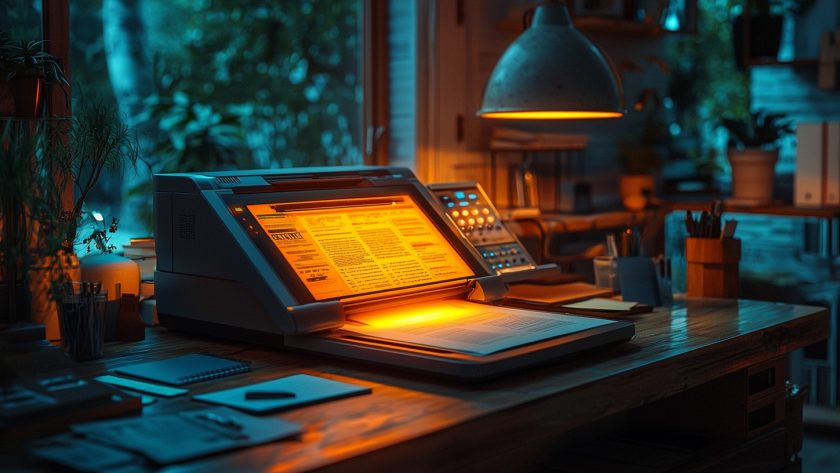Computer scanners convert physical documents, images, and data into digital formats. Their evolution reflects advancements in data storage, accessibility, and quality. Modern scanners, from basic copiers to sophisticated devices, offer high-resolution imaging, 3D scanning, and automated data processing.
For those seeking convenience on the go, a free scanner app can provide similar functionality, making document management easier than ever. Scanners and apps alike are vital tools in document management, healthcare, education, and art preservation.
How scanners work
Modern scanners use two primary technologies: Charge-Coupled Device (CCD) and Contact Image Sensor (CIS).
CCD scanners
CCD scanners, known for excellent image quality, use mirrors and lenses to convert light into electronic signals. A bright light illuminates the document; reflected light is directed toward a CCD array, which converts light into digital data via an analog-to-digital converter.
Software processes the data to enhance image quality, adjusting color balance, contrast, and sharpness. This technology offers high resolution and color accuracy, ideal for professional imaging.

CIS scanners
CIS scanners are more compact and energy-efficient, using LEDs and sensors close to the scanning surface, ideal for portable solutions. While more affordable and compact than CCD scanners, they may sacrifice some image quality and resolution, making them better suited for basic document scanning.
Types and trends of computer scanners
Diverse scanner types cater to various needs, enhancing efficiency across industries:
- Flatbed scanners: The most common type, versatile for high-quality images and various document types, from books to photos.
- Sheet-fed scanners: Compact and efficient, these automatically pull documents, ideal for high-volume office scanning.
- Handheld scanners: Portable and user-friendly, popular for scanning books, magazine pages, or hard-to-reach areas. Equipped with Wi-Fi or Bluetooth, these wireless scanners allow on-the-go scanning, popular in logistics and retail.
- High-resolution and high-speed scanning: Many scanners now offer resolutions up to 4800 dpi or higher for precise detail, such as art preservation and medical imaging, with built-in color depth technology. High-speed innovations enable fast document processing in sectors like finance and government.
- Drum scanners: Known for extremely high-resolution output, used in specialized fields like fine art reproduction and scientific research, achieving unmatched color depth and detail.
- Automated document scanning: Automation improves efficiency with automatic document feeders (ADFs) and OCR software for bulk scanning, and with tools like Scanner App, it simplifies digital archiving and content management.
- 3D scanners: Capture not only images but also the shape and texture of physical objects. Widely used in industrial design, architecture, and healthcare, increasingly found in medical imaging, product design, and quality control.
Cool uses and benefits of scanners
Scanners are way more versatile than you might think:
- Saving old documents: High-res scanners can digitize fragile historical papers, preserving them for the future.
- Healthcare tools: Specialized scanners, like CT and MRI, help doctors with diagnostics and even create 3D models for treatments.
- For learning: Scanners make teaching materials digital, so students can access them online, perfect for remote learning.
- In manufacturing: 3D scanners help inspect parts, reverse engineer components, and create super-precise models to keep production running smoothly.
What’s next for scanners?
Scanners are getting smarter and more connected with some really exciting upgrades:
- Cloud uploads: Scan and send files directly to platforms like Google Drive or Dropbox—perfect for remote work.
- Mobile scanning: Apps now let your phone double as a scanner, with features like auto-adjust and real-time text recognition.
- Smarter AI: Advanced AI makes text extraction (OCR) super accurate while organizing and analyzing documents automatically.
- AR + 3D scanning: Combining augmented reality and 3D scanning will create more interactive tools for industries like real estate, architecture, and design.
- All-in-one scanners: Future scanners might have cool extras like thermal imaging or biometric capture, making them useful for healthcare and security too.





